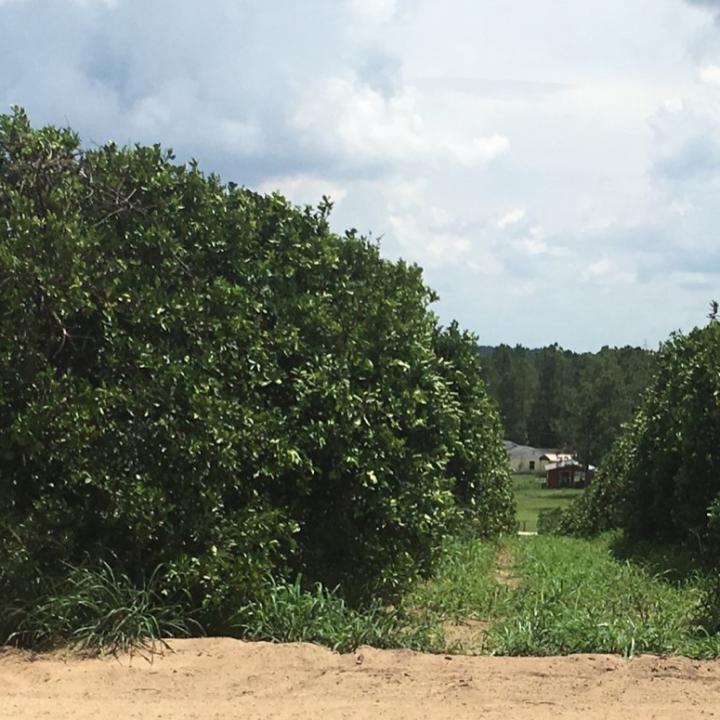
Credit: Colorado State University
Over the last decade, Florida's famous citrus industry has been battered by a disease called citrus greening, which has destroyed acres of crops and cost untold billions in revenue.
Combining expertise in soil, plant pathology, entomology and chemistry, a Colorado State University team will research how the disease propagates, and how it can be stopped. Their efforts are supported by a $1.2 million gift from Cutrale, one of the largest suppliers of orange juice in the world.
Citrus greening (or the Chinese "Huanglongbing"), is caused by a bacterium transmitted from tree to tree by the Asian citrus psyllid, an insect that feeds on the leaves and stems of citrus trees. Diseased trees produce green and stunted fruit; eventually, the bacterium, Candidatus Liberibacter asiaticus, can kill entire groves of trees.
The CSU team is led by Thomas Borch, a professor in the Department of Soil and Crop Sciences with joint appointments in civil engineering and chemistry. Together, the researchers will assess how effective pesticides have been at controlling the psyllids, and whether these insecticides could be distributed differently to better manage the psyllid populations.
"We know that the insects transfer the pathogens to the citrus trees," Borch said. "So controlling the insects is vitally important – prevention is the key since there is no cure for citrus greening."
The team will sample and analyze the spatial distribution of pesticides within the grove and individual trees using dye techniques and passive air sampling devices.
Borch and colleagues also want to know if the psyllids have become resistant to pesticides. Better understanding this resistance will help entomologists, including team member Paul Ode, integrate other techniques like parasitic wasps and mating disruption approaches. Ode is a professor in the Department of Bioagricultural Sciences and Pest Management, part of CSU's College of Agricultural Sciences.
Identifying how the insects move from grove to grove, and whether and how infected psyllids are likely to disperse, will also be important to the study, according to Ode. Some of the psyllids come from abandoned citrus farms that remain in close proximity to active citrus operations. It is yet unclear whether storms like Hurricane Irma have worsened the impacts of citrus greening by contributing to its spread.
Other efforts to control psyllids have included the use of reflective ground cover, thought to discourage psyllids from feeding; adding plants known to attract or repel psyllids to citrus groves; and implementing biocontrol agents such as fungi and parasitic wasps in the groves.
Team member Pankaj Trivedi, assistant professor of bioagricultural sciences and pest management, will lead the development of recommendations for an advanced citrus production system. In such a system, grove design and cultural practices would be altered to maximize biological interactions and soil health, which can increase production and better control citrus greening.
Along with Borch, Ode and Trivedi, other team members include Jan Leach, University Distinguished Professor and a professor in bioagricutural sciences and pest management; and Chuck Henry, professor and chair in CSU's Department of Chemistry.
In Florida, citrus greening has already contributed to $7.8 billion in lost revenue, destroyed 162,000 acres of crops, and resulted in the loss of more than 7,500 jobs. The CSU researchers hope their efforts can aid in relief for a region recovering not only from an industry-killing disease, but also from recent hurricanes and floods.
By supporting the CSU work, Cutrale officials hope the outcomes benefit the entire citrus industry, both in the United States and across the globe.
"Citrus greening continues to devastate our industry, and Cutrale is looking forward to being involved in this endeavor," said Joe Birge, president of Cutrale Citrus Juices USA, Inc. "Our industry looks to the scientific expertise and insights of world-class researchers at CSU to help us understand how to control and prevent the spread of this disease that has ravaged citrus groves around the globe."
"We are pleased to engage in this important effort to curb the effects of a devastating scourge," Borch said. "Our goal is to contribute knowledge and best practices around a disease that has wreaked untold havoc on citrus groves across the planet."
###
Cutrale is one of the world's largest processors and growers of oranges. Cutrale services customers in over 80 countries from its facilities in Brazil, Florida and southern Europe.
Media Contact
Anne Manning
[email protected]
970-491-7099
@ColoStateNews
Original Source
https://agsci.source.colostate.edu/save-floridas-oranges-csu-team-will-study-deadly-citrus-disease/





